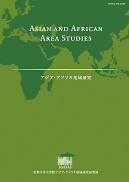17 巻, 2 号
選択された号の論文の7件中1~7を表示しています
- |<
- <
- 1
- >
- >|
特集「ベトナムのガイ人―客家系マイノリティの歴史・宗教・エスニシティ―」
-
2018 年 17 巻 2 号 p. 169-179
発行日: 2018/03/31
公開日: 2018/05/12
PDF形式でダウンロード (1197K) -
2018 年 17 巻 2 号 p. 180-206
発行日: 2018/03/31
公開日: 2018/05/12
PDF形式でダウンロード (2402K) -
2018 年 17 巻 2 号 p. 207-226
発行日: 2018/03/31
公開日: 2018/05/12
PDF形式でダウンロード (784K) -
2018 年 17 巻 2 号 p. 227-257
発行日: 2018/03/31
公開日: 2018/05/12
PDF形式でダウンロード (2286K) -
2018 年 17 巻 2 号 p. 258-286
発行日: 2018/03/31
公開日: 2018/05/12
PDF形式でダウンロード (1230K)
書評
-
2018 年 17 巻 2 号 p. 287-302
発行日: 2018/03/31
公開日: 2018/05/12
PDF形式でダウンロード (1006K)
フィールドワーク便り
-
2018 年 17 巻 2 号 p. 303-336
発行日: 2018/03/31
公開日: 2018/05/12
PDF形式でダウンロード (4013K)
- |<
- <
- 1
- >
- >|
